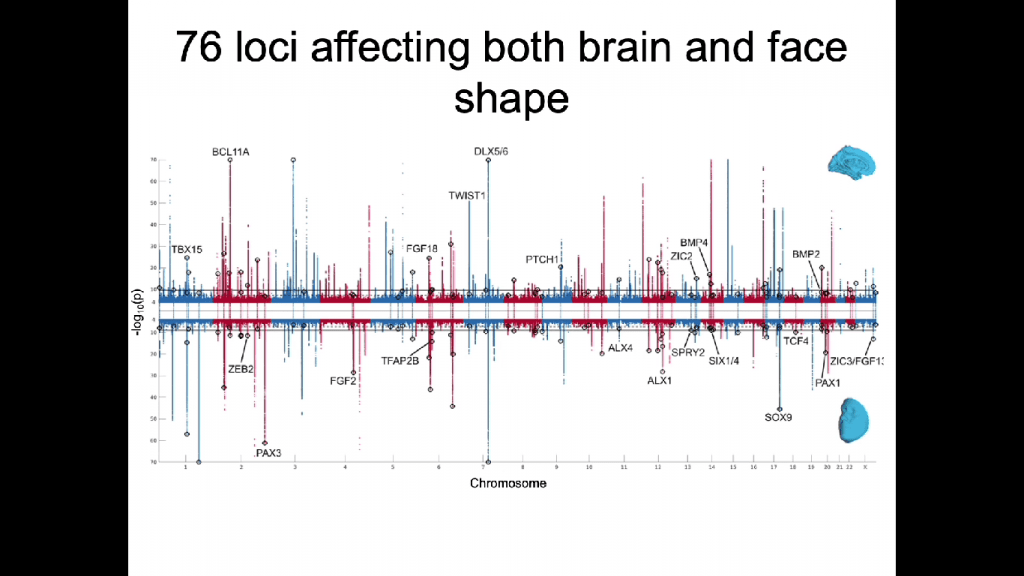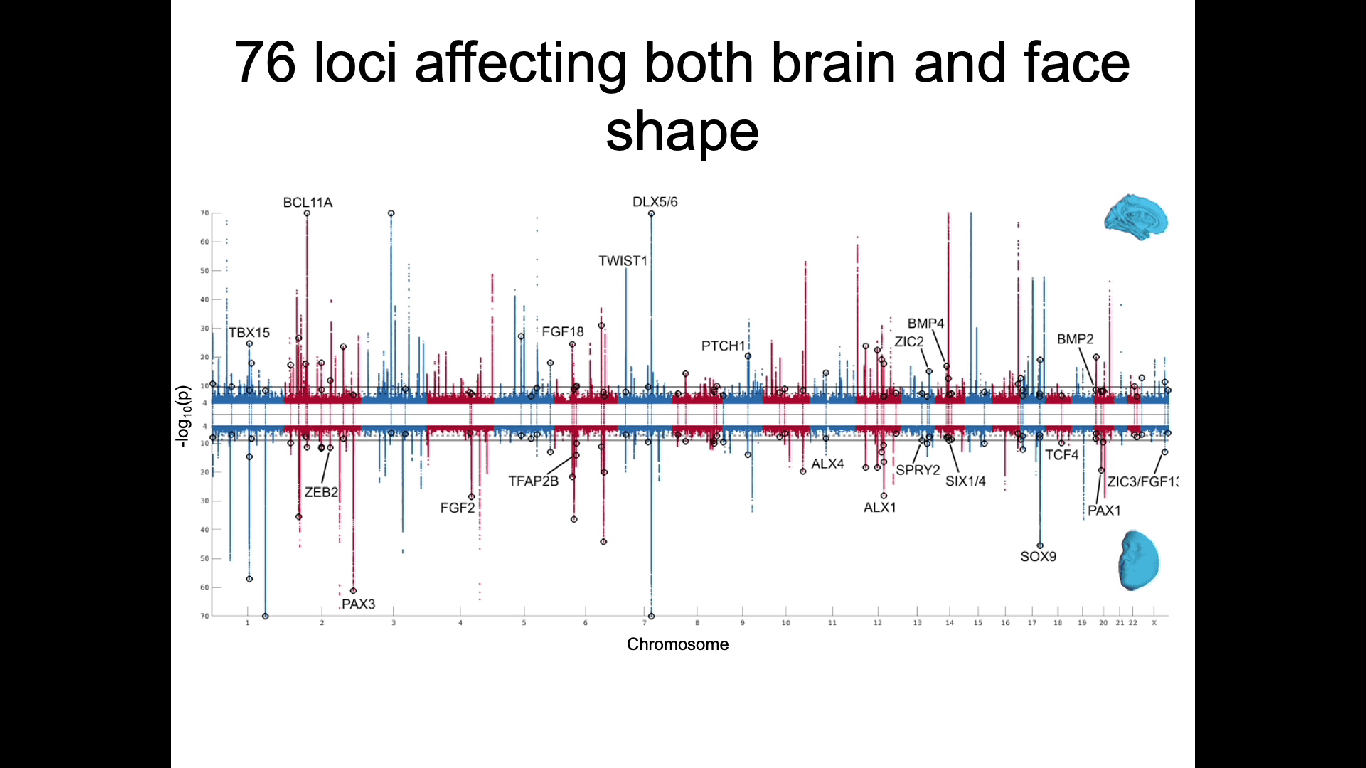The following article is based on a video posted to JRNLclub.com by Sahin Naqvi.
A great part of psychology is how many connections it makes to other fields. One of the most common connections is to neuroscience. Although the following study is not related to my research in social psychology, it still offers some fascinating insights. And hey, maybe someday it could be applied in a social psychology context!
In “Shared heritability of human face and brain shape” (2021), Naqvi and colleagues explore the role of genetic variation on brain shape, face shape, and cognitive traits. Previous studies have shown that variants in the genome affect both brain structure (such as surface area) and cognitive traits (such as neuropsychiatric disorders). The present study researches connections between brain shape and face shape, which could also be connected. From Days 15 to 24 after conception, the embryo develops its neural tube, which leads to the development of both brain and face. In addition to the clear physical proximity of these two areas, there is also paracrine signaling between the two ( a kind of cell communication that instructs nearby cells to change).
Researchers posed this question: “how do these developmental links extend to common human genetic variation?” Previous work has already established that there are over 200 loci involved in variations to face shape. Loci are the specific locations of a gene on a chromosome. To pursue connections between brain and face shape, Naqvi and colleagues adapted a face analysis method to map genetic effects on brain shape. Using MRIs from 19,644 individuals, they subdivided the brain into 285 segments. Applying their adapted methods, they found 472 significant loci for brain shape. Considering this in conjunction with the previous research on face shape, researchers discovered that there are 76 loci affecting both brain and face shape. This overlap means that certain genes are associated with specific syndromes, such as the gene ALX1 with frontonasal dysplasia.

Naqvi and colleagues found that genes can be categorized into three main types. The first type are transcription factors with known roles in cranial neural crest cells and their derivatives. Transcription factors are proteins involved in the process of converting DNA to RNA, and cranial neural crest cells are cells that migrate to help form the sensory, sympathetic, and parasympathetic nervous systems, the adrenal gland, the epidermis, and skeletal and connective tissues of the head. The second type are genes that play a role in FGF, Hedgehog, and BMP pathways. The FGF, or Fibroblast Growth Factor, pathways help develop the bones of the skull and face. The Hedgehog pathways ensure intercellular communication. The BMP, or Bone Morphogenetic Protein, pathways help develop bone formation and organ systems. The third type of genes are pathways with no known roles in brain-face cross-talk.
After identifying these categories, the researchers next investigated which cell types and tissues are important for brain and face shape. They found that cranial neural crest cells and their derivatives are important for both brain and face shape, but not cognitive shapes. They also found that brain organoid-derived cell types are important for brain shape and cognitive traits, but not face shape. It seems that early embryonic genetic variations affect both brain and face shape, but cognitive function effects may not develop until later.
Discovering this connection of genes to both face shape and brain shape is an important advancement for neuroscience, and strengthens our understanding of early embryonic development. Since we express emotions with our faces and interpret them with our brains, maybe it’s not that far from my social psychology research after all!

You must be logged in to post a comment.